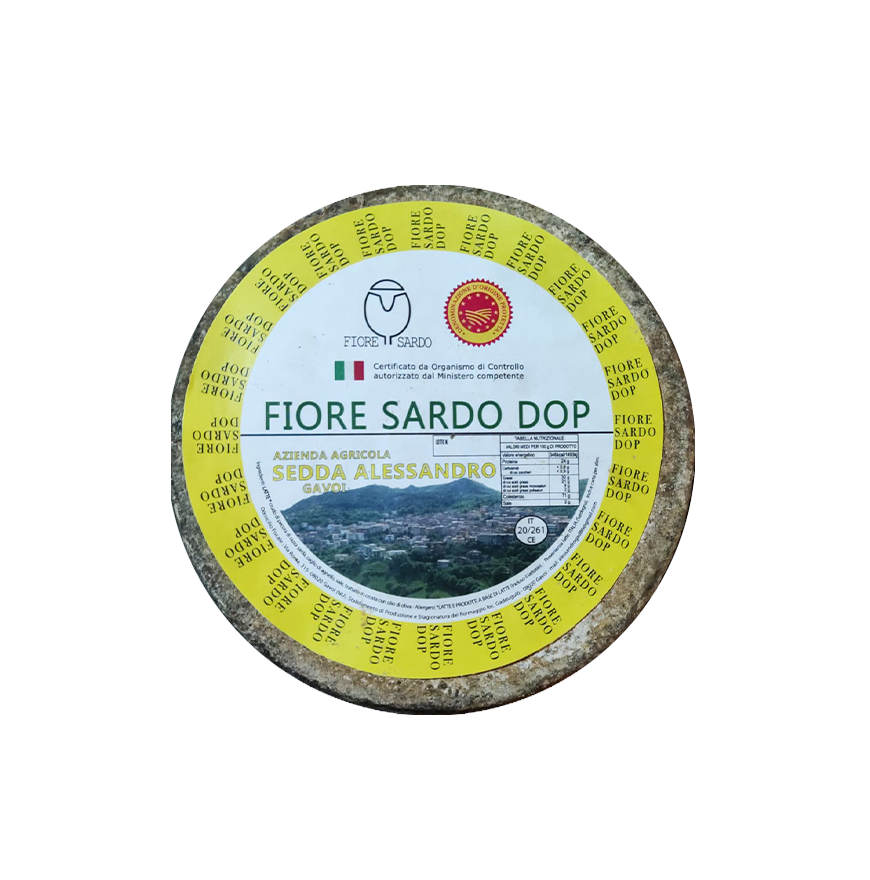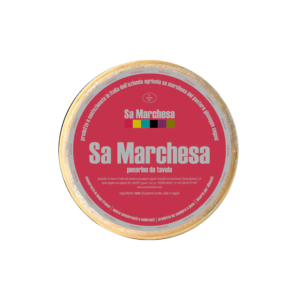Fiore Sardo: Questo nome è dovuto molto probabilmente al fatto che, per la sua fabbricazione, si usassero fino a non molto tempo fa delle forme “pischeddas” di legno di castagno forate o anche di quercia o di pero selvatico, sul cui fondo era scolpito un fiore (Fiore Sardo), forse il giglio o l’asfodelo, che lasciava sul formaggio un vero e proprio marchio che conteneva spesso anche le iniziali del nome del produttore.
Negli anni trenta fu lanciata da una ditta, ad iniziativa di una nota istituzione, un tipo di forma, molto adatta per la fabbricazione del Fiore Sardo, in alluminio, con rigature concentriche ai lati e con la scritta sul fondo “Fiore Sardo”.
“Tali forme, capaci di una pezzatura di 2-3 Kg, presentavano però l’inconveniente di imprimere nella pasta tutti gli ornamenti in rilievo, inconveniente che non permetteva una perfetta pulizia della superficie di esse durante il periodo di stagionatura. Sarebbe cosa più pratica rimetterle in commercio ma perfettamente lisce”. (Peppino Scarpa, 1934). Oggi vengono utilizzate forme “pischeddas” di acciaio inox. Da millenni le procedure principali riguardanti la produzione di questo formaggio sono rimaste immutate. Fiore Sardo Dop di Gavoi
-
- ingredienti del Fiore Sardo: latte di pecora intero , caglio di agnello razza sarda , sale; prodotto soggetto a calo di peso.
Il FIore Sardo è un formaggio unici nel suo genere, è prodotto in determinati territori della Sardegna centrale. Prodotto direttamente dai pastori del territorio di Gavoi, Fonni,Ollolai, Ovodda, Lodine.
This name is most likely due to the fact that, in its manufacture, it would use up to not so long ago of the forms “pischeddas” chestnut wood drilled or oak or wild pear, the bottom of which was carved a flower, perhaps the lily or the asphodel, which left on the cheese a real brand that often contained the initials of the name of the manufacturer.
In the thirties, it was launched by a company, on the initiative of a known institution, a kind of shape, very suitable for the manufacture of Fiore Sardo, aluminum, with concentric grooves on the sides and on the bottom that says “Fiore Sardo”.
“Such forms, capable of a particle size of 2-3 Kg, presenting the drawback of imparting into the dough all ornaments in relief, drawback that did not allow a perfect cleaning of the surface of them during the period of curing. It would be most practical thing put them back on the market but perfectly smooth “. (Peppino Scarpa, 1934). Today are used forms “pischeddas” stainless steel. For thousands of years the main procedures relating to the production of this cheese were unchanged. Fiore Sardo Dop Gavoi
Ingredients: whole sheep’s milk, lamb rennet Sarda, salt. product subject to weight loss


